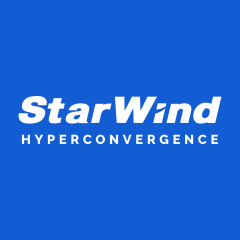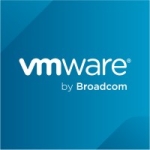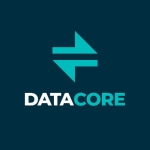Our organization was using physical storage platforms where we were facing slowness issues, and the cost of a conventional platform was high.
We heard about the solution from one of our partners, and we got a demo of the product.
The core features of the product resolved our issues, like high availability and integration of the solution with the virtual platforms.
The StarWind Virtual SAN solution is cheap compared to conventional physical storage platforms. StarWind Virtual SAN is a good product when it comes to virtualization.
StarWind Virtual SAN helps us to improve our organization as most of our infrastructure is on the virtualization platform.
StarWind Virtual SAN helped us in the integration with the virtualization platforms. By using common X86 servers instead of pricey proprietary hardware, StarWind Virtual SAN lowers the cost of storage infrastructure.
It is straightforward to configure, monitor, and administer the storage infrastructure with StarWind Virtual SAN's intuitive administration interface.
When their data storage requirements increase, enterprises may quickly enhance storage capacity with the help of StarWind Virtual SAN without having to pay additional fees for specialized storage gear.
There are different features that helped our organization as compared to conventional storage platforms. These include:
Scalability. Without the need for any downtime, enterprises can simply grow their storage infrastructure using StarWind Virtual SAN by adding new servers or disks to the current infrastructure.
Flexibility. A variety of deployment options, including hyper-converged infrastructure, two-node cluster configurations, and conventional SAN designs, are supported by StarWind Virtual SAN.
Performance. The usage of RAM and SSD caching, as well as the capability to offload storage traffic from the network using RDMA technology, allow StarWind Virtual SAN to operate at a high-performance level.
Cost-effectiveness. By using common X86 servers instead of pricey proprietary hardware, StarWind Virtual SAN lowers the cost of storage infrastructure.
Usefulness. StarWind Virtual SAN offers a straightforward and user-friendly administration interface that makes it simple to set up, keep track of, and administer the storage infrastructure.
The interface of the management console of the StarWind Virtual SAN is complex, and it's difficult for the novice user to interact with the management having less knowledge or training in the product.
The troubleshooting guide of the product is also for the technical resources.
The product needs to improve its features in terms of customer support and the management interface. The improvements in the management interface for the product help the user to work with the storage node having less knowledge or interaction with the product.
I have been using the StarWind Virtual SAN solution for the last six months.















